
Vietnamese Cinnamon (Saigon Cinnamon): Everything You Need to Know
Vietnamese cinnamon, also known as Saigon cinnamon, is a distinct spice native to central and northern Vietnam. Known for its naturally sweet aroma and mild heat, it is often featured in traditional dishes. In this article, we’ll take a closer look at the cinnamon tree itself, explore how this spice is used in some of Vietnam’s most iconic recipes, learn about how it’s grown and harvested, and discover how cinnamon essential oil is used.
What is Vietnamese cinnamon?
Vietnamese cinnamon dishes
Nutrition facts
Growing & harvesting
Vietnamese cinnamon oil
FAQs
What is Vietnamese cinnamon (Saigon cinnamon)?
Overview
Vietnamese name: que
Botanical name: Cinnamomum loureiroi (not to be confused with Ceylon cinnamon)
Shape and appearance: Brown bark, rough exterior when fresh; curls into sticks when dried.
Flavor profile: Warm, sweet, and spicy — bolder and more intense than Ceylon cinnamon
How to enjoy it: In Vietnam, cinnamon is used in savory dishes like pho and Vietnamese cinnamon pork roll, sweet drinks like cinnamon tea, and also in traditional herbal remedies or essential oil.
Vietnamese cinnamon comes from a tall, aromatic tree native to the highland forests of central and northern Vietnam. These cinnamon trees can grow quite tall—anywhere from 10 to 20 meters—with straight, sturdy trunks and rough, gray-brown bark that holds the fragrant cinnamon beneath the surface.
The leaves are long and slender, often reaching up to 20 centimeters in length and 4 to 6 centimeters wide, with three prominent veins running lengthwise. If you crush a leaf or snap a twig, you’ll notice the signature sweet, spicy aroma—a warm, comforting scent.
Every part of the tree—the bark, branches, and even the leaves—has a pleasant fragrance, but it’s the inner bark that’s prized for its intense flavor and high essential oil content. In Vietnam, farmers typically wait about five years before harvesting the bark, ensuring a rich, complex cinnamon profile that’s sweeter and more pungent than most other varieties.

The rich, textured bark of Vietnamese cinnamon before it’s harvested.

Lush green branches of a Vietnamese cinnamon tree
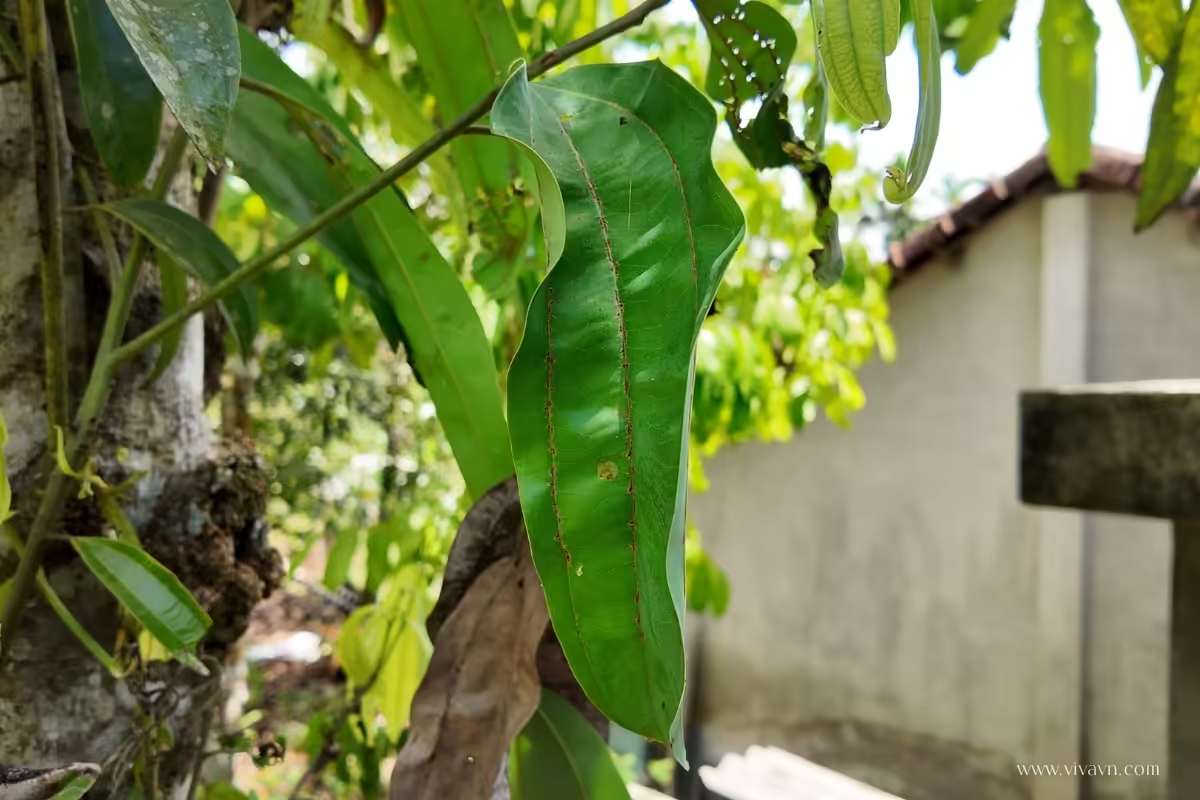
Fresh cinnamon leaves with their distinct triple veins
Why are Saigon cinnamon and Vietnamese cinnamon considered the same?
Because they come from the exact same tree, Cinnamomum loureiroi, which is native to Vietnam. The term “Saigon cinnamon” became common in global markets because Saigon (now Ho Chi Minh City) was the main port where cinnamon was exported from.
So, whether it’s called Saigon cinnamon or Vietnamese cinnamon, it refers to the same sweet, spicy, high-oil-content variety that makes this type of cinnamon so prized in cooking and herbal remedies.
Popular Vietnamese dishes with cinnamon
Cinnamon tea (tra que)
Cinnamon tea is a simple yet popular drink in Vietnam, often enjoyed for its warm, soothing flavor. The tea is made by gently simmering cinnamon sticks in water, allowing the spice’s natural sweetness and aroma to infuse the brew. Many like to add a touch of honey or a slice of lemon to enhance the flavor and add a refreshing twist. It’s a comforting beverage, perfect for relaxing moments or to help ease the day’s stress.
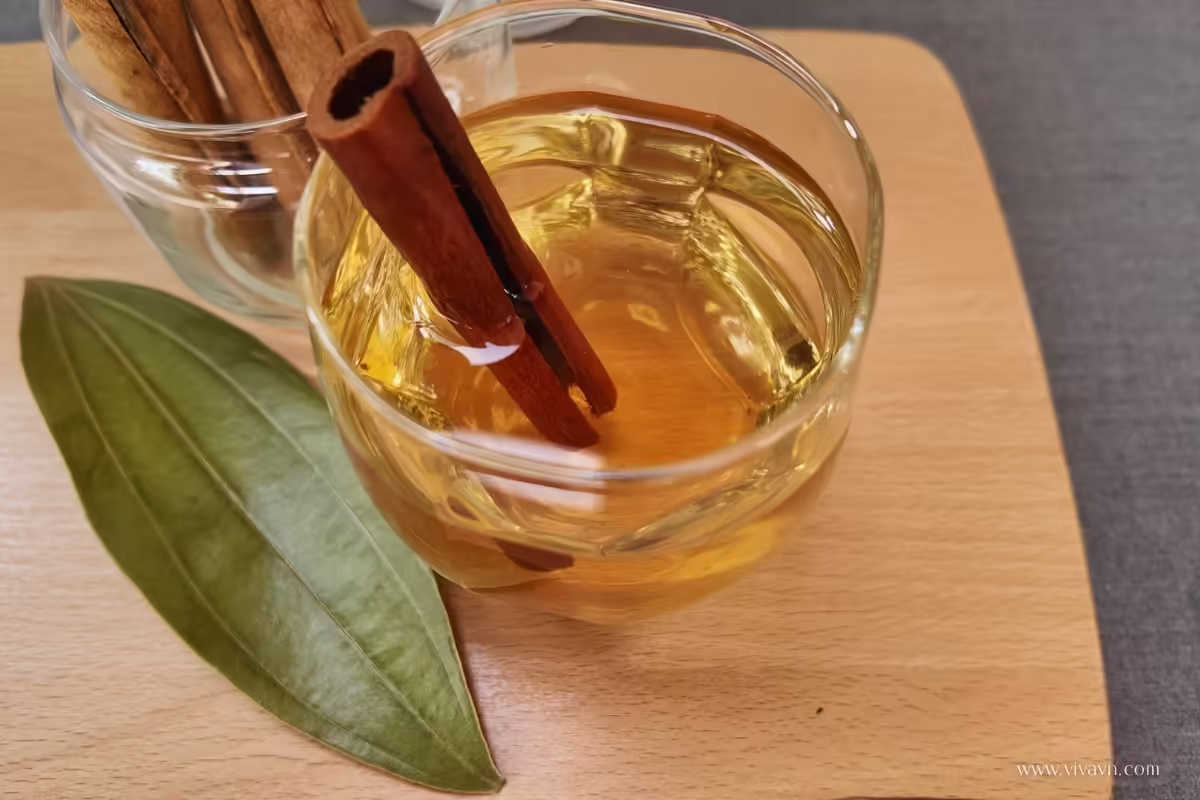
A warm cup of Vietnamese cinnamon tea, made by simmering cinnamon sticks in water
Vietnamese cinnamon pork roll (cha que)
Cha que is a Vietnamese dish with deep roots in Hanoi’s culinary traditions. Known for its fragrant cinnamon flavor and tender texture.
The process of making cha que at home is quite simple: ground pork is seasoned with cinnamon powder and traditional spices, shaped, steamed, then lightly pan-fried for a golden, slightly crispy finish. People can enjoy cha que with plain rice, steamed rice rolls (banh cuon), or just by itself.
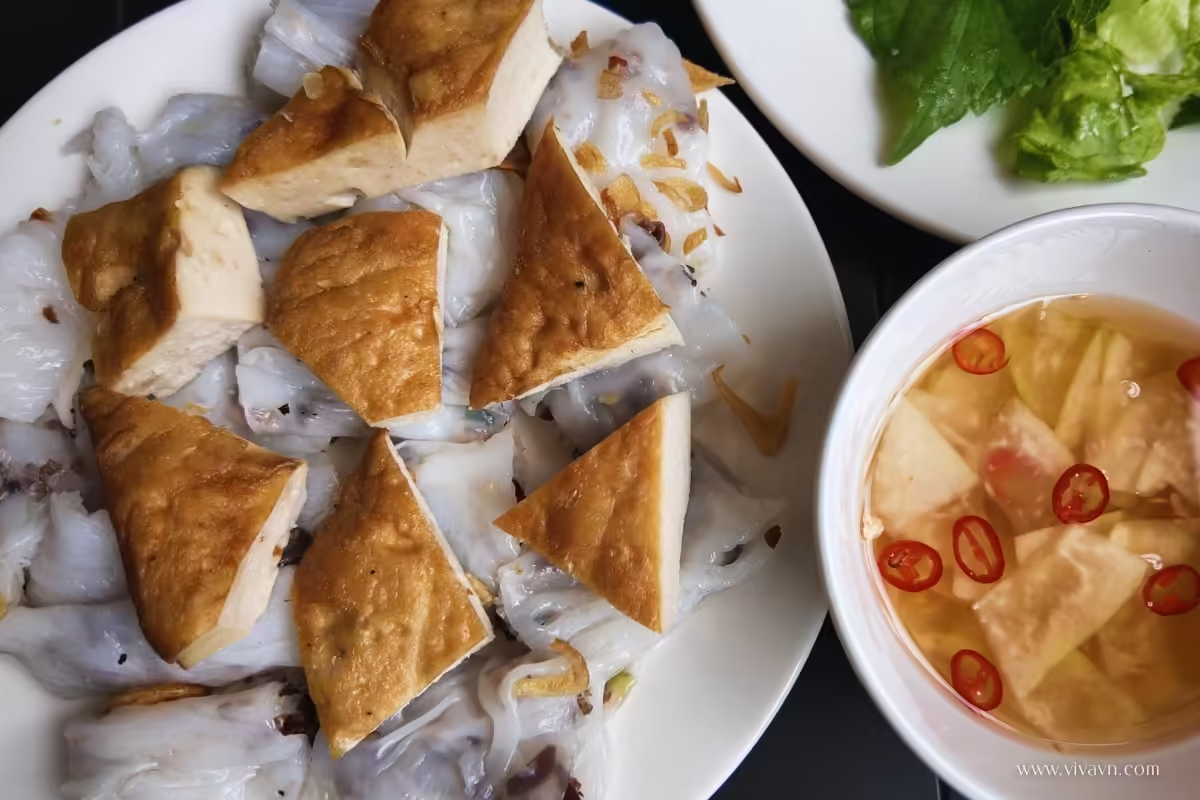
Steamed rice rolls topped with slices of Vietnamese cinnamon pork sausage, served with fresh herbs and dipping sauce for a classic northern-style breakfast

Close-up of cha que—Vietnamese pork sausage infused with cinnamon—lightly pan-fried for a golden crust and tender texture inside.
Interested in trying Vietnamese cinnamon at home?
If you’d like to try making Vietnamese cinnamon tea, oatmeal, or even baked treats at home, using high-quality Saigon cinnamon can really bring out the flavor.
This organic Saigon cinnamon from iHerb (affiliate link) offers the bold, sweet aroma that makes Vietnamese cinnamon special.
Pho (Vietnamese noodle soup)
Pho is one of the most well-known dishes in Vietnamese cuisine. A bowl of pho brings together a mild, subtly sweet broth with soft, chewy rice noodles, tender slices of beef or chicken, and a fragrant mix of fresh herbs like Thai basil. The broth is made by simmering beef bones with a blend of traditional Vietnamese spices. Cinnamon is often added directly to the pot, where it brings a gentle warmth and helps balance the overall flavor.
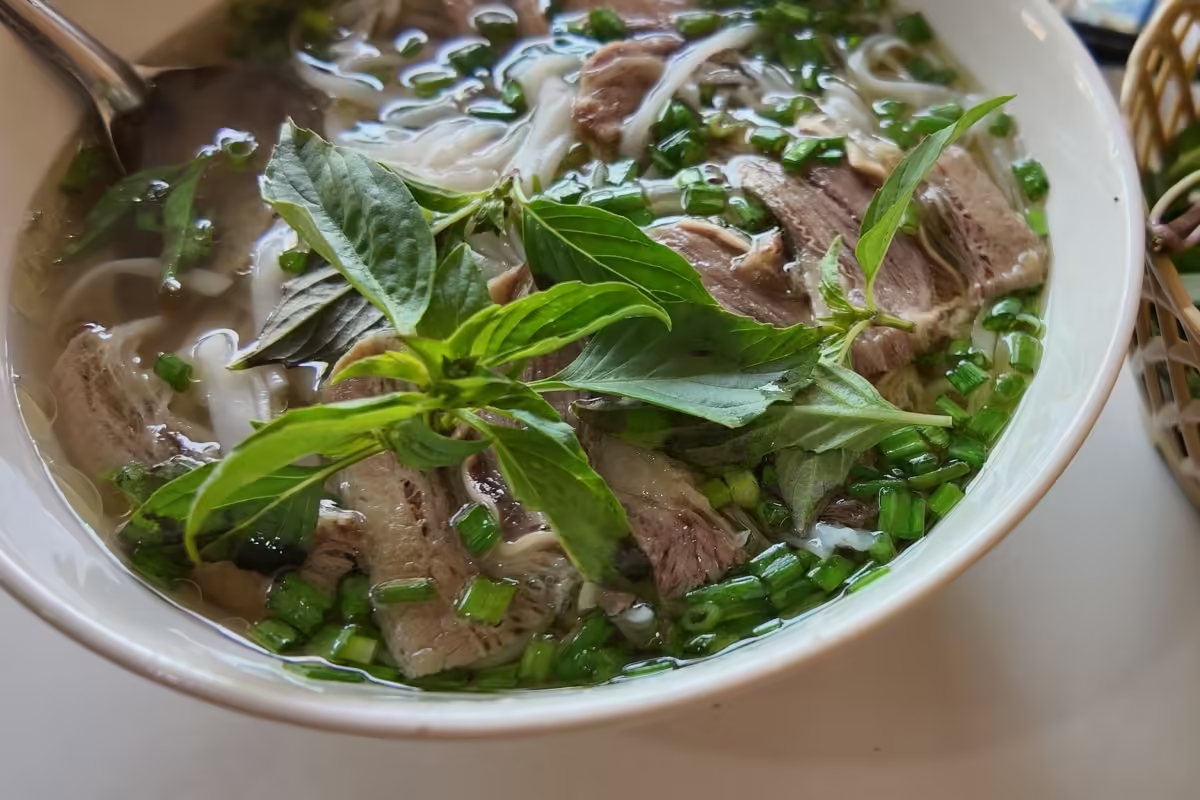
A fragrant bowl of Vietnamese pho—its rich broth gently simmered with cinnamon and other warm spices
Nutrition facts of cinnamon
Here’s the nutritional breakdown for a 3.5-ounce (100-gram) serving of ground cinnamon, based on data from the USDA SR Legacy:
For the full nutrient profile, visit USDA FoodData Central.
| Nutrient | Amount | Notes |
|---|---|---|
| Dietary Fiber | 53.1 g | Supports healthy digestion. |
| Calcium | 1000 mg | Important for strong bones and teeth. |
| Manganese | 17.5 mg | Plays a role in metabolism and antioxidant function. |
| Iron | 8.32 mg | Helps carry oxygen in the blood. |
| Potassium | 431 mg | Supports normal fluid balance and muscle function. |
| Magnesium | 60 mg | Involved in muscle, nerve, and enzyme functions. |
| Vitamin K | 31.2 µg | Supports normal blood clotting and bone health. |
| Vitamin E (alpha) | 2.32 mg | Acts as an antioxidant and supports immune health. |
| Carbohydrates | 80.6 g | Provides energy, mostly from natural plant sugars and starches. |
| Protein | 3.99 g | Contributes to tissue repair and maintenance, though in small amounts. |
Growing and harvesting cinnamon in Vietnam
In Vietnam, cinnamon is usually grown either from seeds or by using cuttings. Most experienced farmers prefer growing from seeds because trees grown from cuttings often produce thinner bark and have lower oil content.
Most farmers don’t start from scratch themselves. Instead, they head to specialized cinnamon nurseries, where young seedlings are cultivated and sold. These nurseries offer healthy, well-rooted young trees that are ready to be transplanted into gardens or farms across Vietnam’s cinnamon-growing regions.
While cinnamon bark can be harvested after around five years, many farmers wait until the trees are 15 to 20 years old. Older trees produce thicker bark with better aroma and flavor.
Many of us are familiar with small cinnamon sticks neatly bundled on store shelves, but those tiny rolls actually come from large, mature trees. When it’s time to harvest, farmers carefully cut sections of the tree trunk and use sharp tools to remove the bark in long strips. The rough outer surface is scraped clean for commercial sale, then the bark is sun-dried and stored. This drying process helps preserve its natural oils and deep, warm aroma.
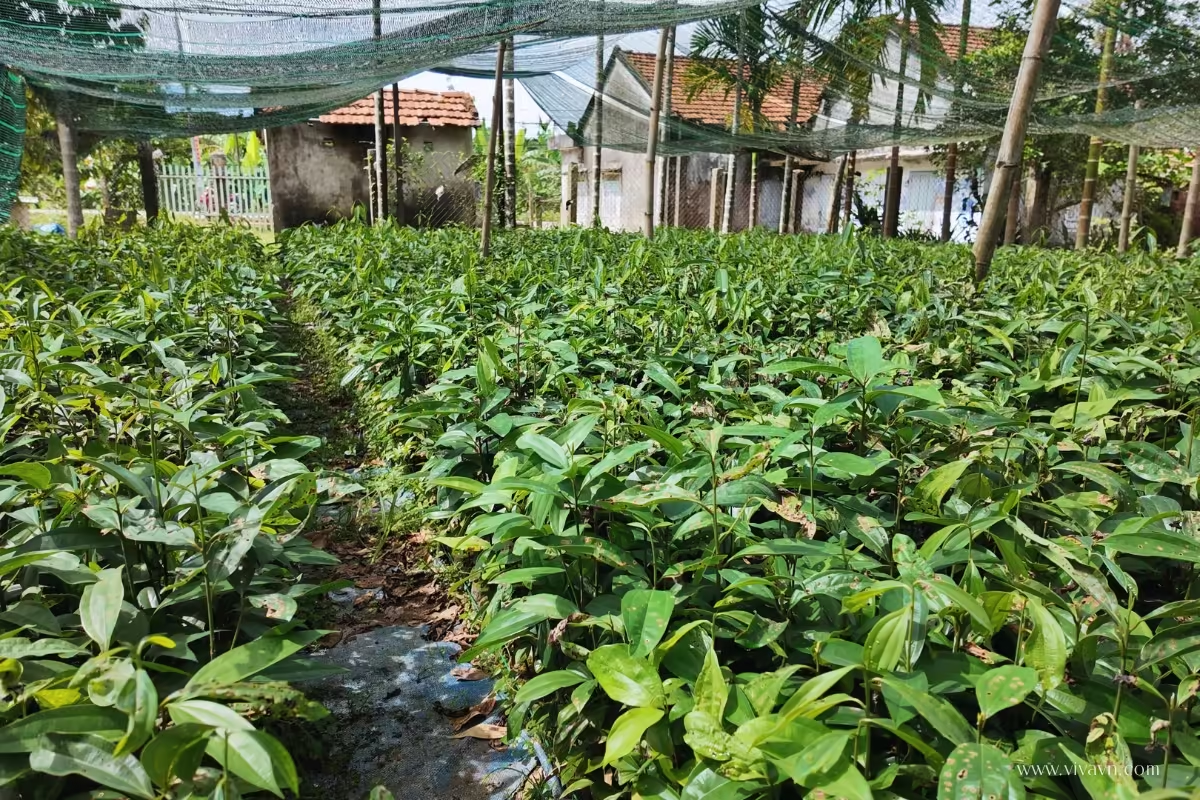
Young cinnamon saplings growing in a nursery in Vietnam.
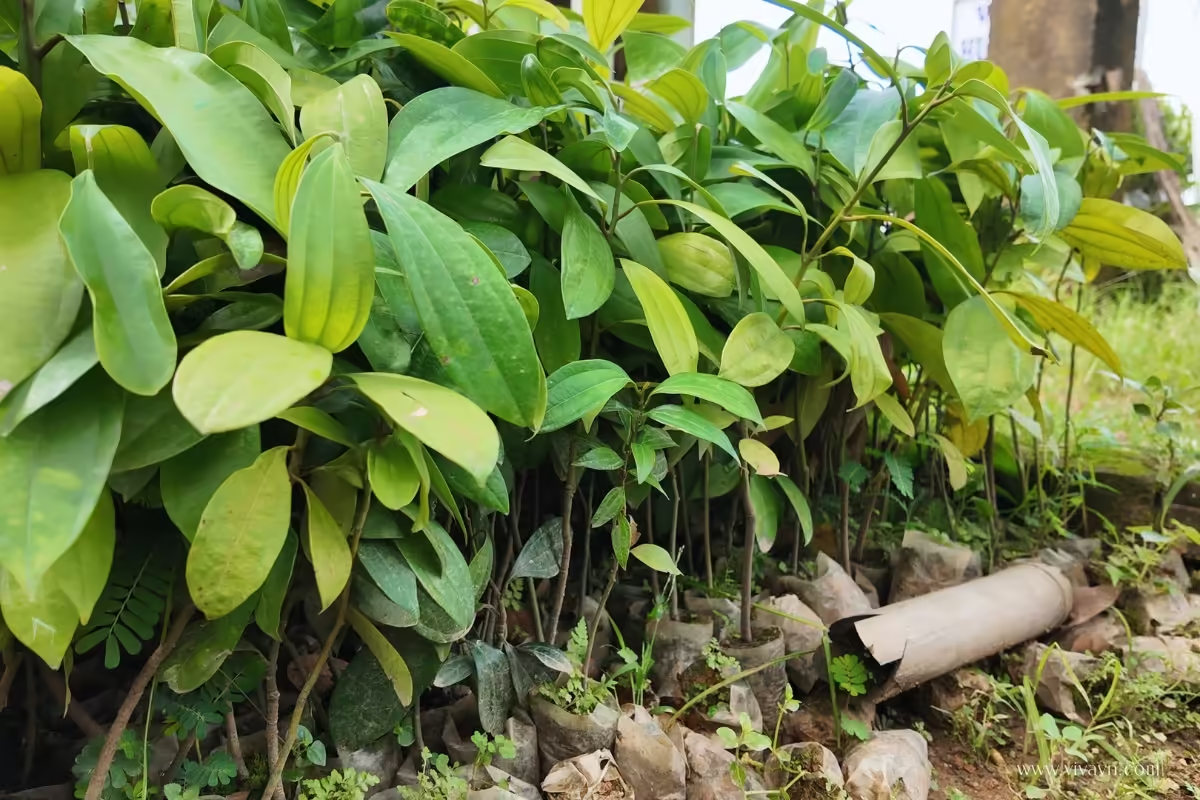
Mature Vietnamese cinnamon seedlings ready for planting.

Cinnamon trees growing in a Vietnamese home garden.
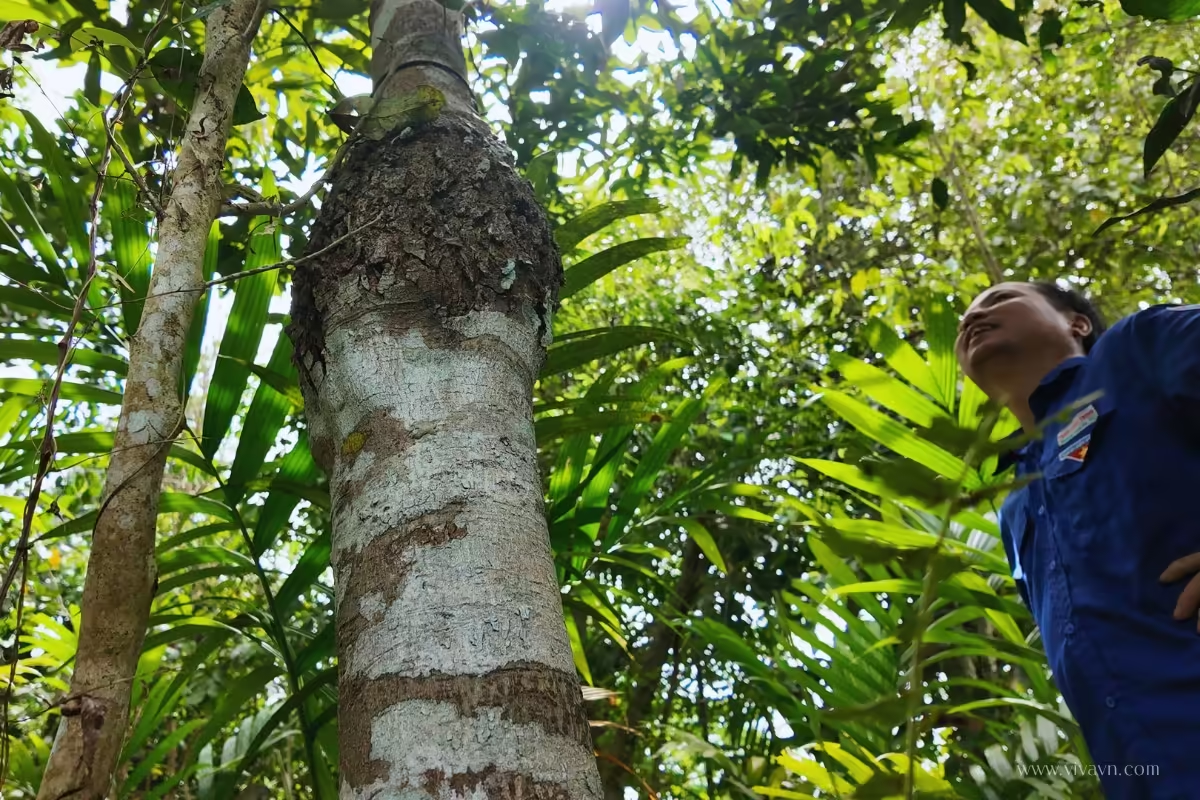
A farmer stands beside a mature cinnamon tree in his garden, nearly ready for harvest after years of patient care.
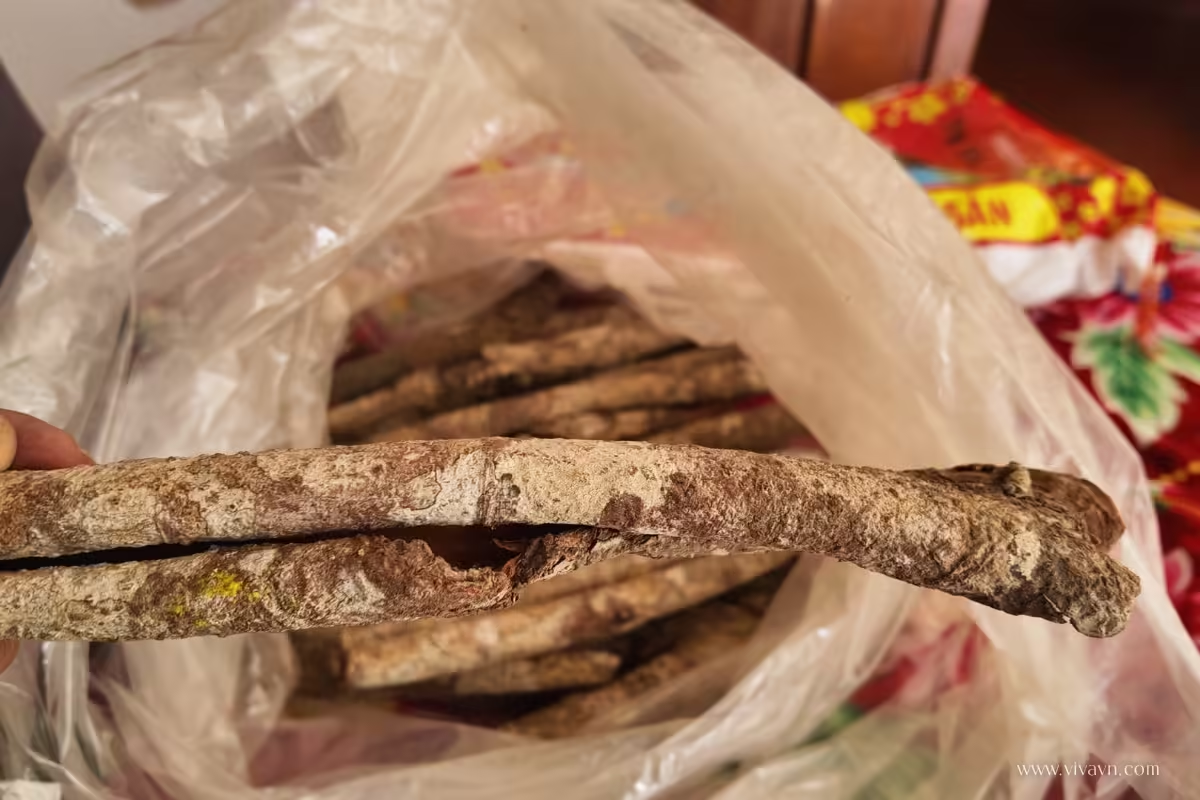
Cinnamon sticks harvested from mature trees are carefully stored by Vietnamese farmers for future use in cooking and home remedies.
Vietnamese cinnamon oil: Benefits beyond the kitchen
Did you know that Vietnamese cinnamon isn’t just used in cooking? Its distinct aroma is also captured in essential oil form. Vietnamese cinnamon essential oil is steam-distilled from the bark of Cinnamomum loureiroi and has a warm, spicy scent with naturally sweet notes. In some cases, the leaves of the cinnamon tree are also distilled to produce a slightly milder oil.
In Vietnam, cinnamon essential oil is often used to freshen the air, ease everyday stress, and support simple skincare routines.
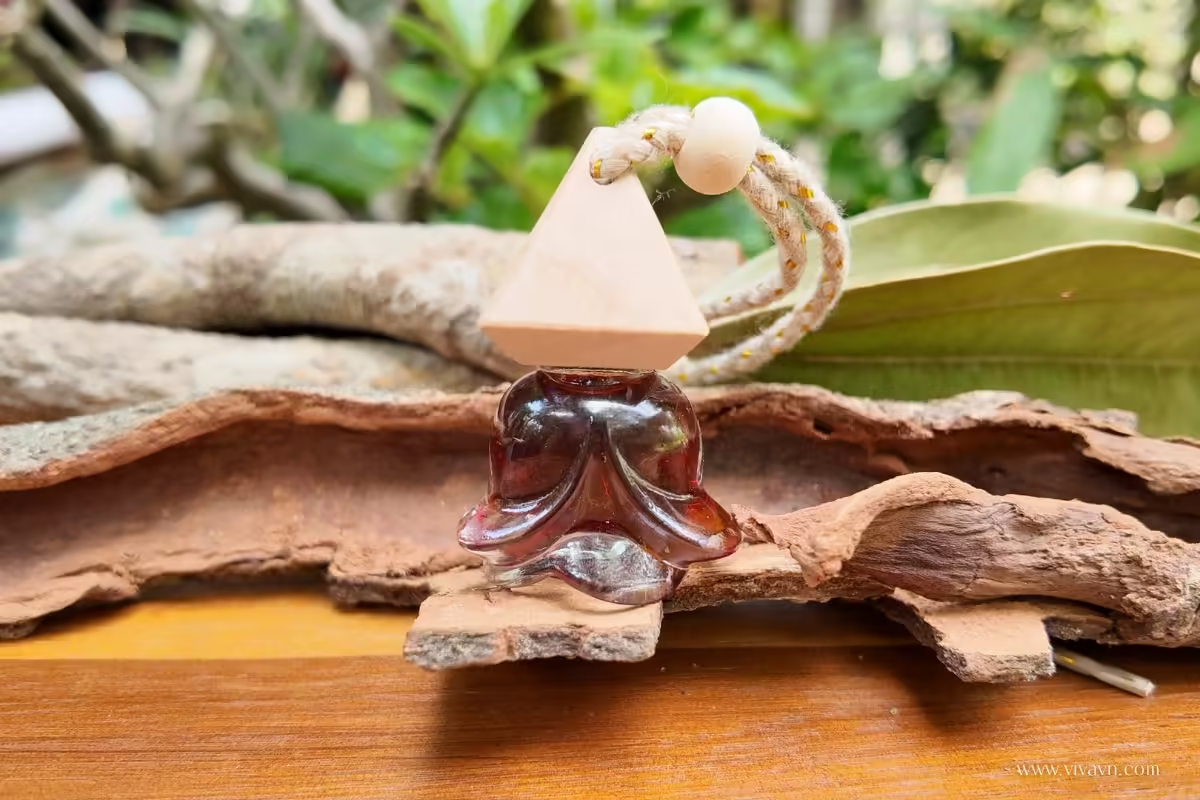
A bottle of Vietnamese cinnamon essential oil resting on dried bark
Frequently asked questions about Vietnamese cinnamon
Is Vietnamese cinnamon the same as Ceylon cinnamon?
No, they come from different species. Vietnamese cinnamon (Cinnamomum loureiroi) is more closely related to cassia than to Ceylon cinnamon. Vietnamese cinnamon is known for its bold, sweet, and spicy flavor, while Ceylon cinnamon is lighter and more delicate.
Is Vietnamese cinnamon the same as Saigon cinnamon?
Yes, they’re the same! “Saigon cinnamon” is just another name for Vietnamese cinnamon. It was named after Saigon (now Ho Chi Minh City), which was historically a major export hub for this spice.
How is Vietnamese cinnamon used in cooking?
You’ll find it in many traditional Vietnamese recipes, including pho broth, cinnamon pork roll (cha que), and cinnamon tea (tra que). It can also be added to desserts, baked goods, and stews for a warm, aromatic kick.
Share on FacebookShare on X (Twitter)Share on PinterestShare on WhatsappShare on LinkedinShare on TelegramShare on Email
- https://www.youtube.com/@VivaVNOfficial
- https://www.facebook.com/vivavnofficial2024
- https://www.pinterest.com/vivavnofficial/
© 2025 VivaVN. All rights reserved.
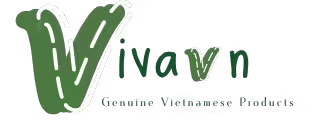

Leave a Reply